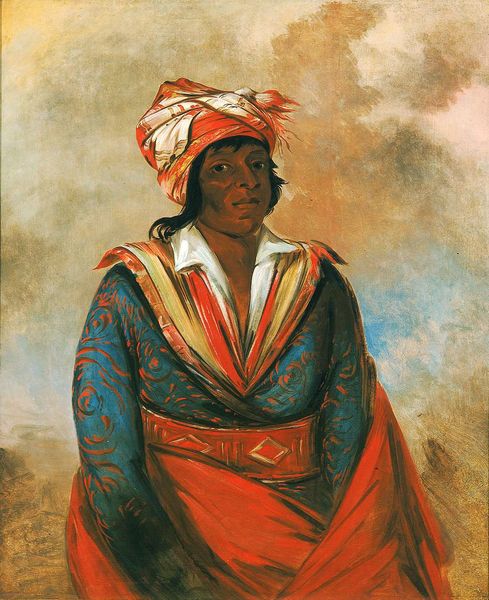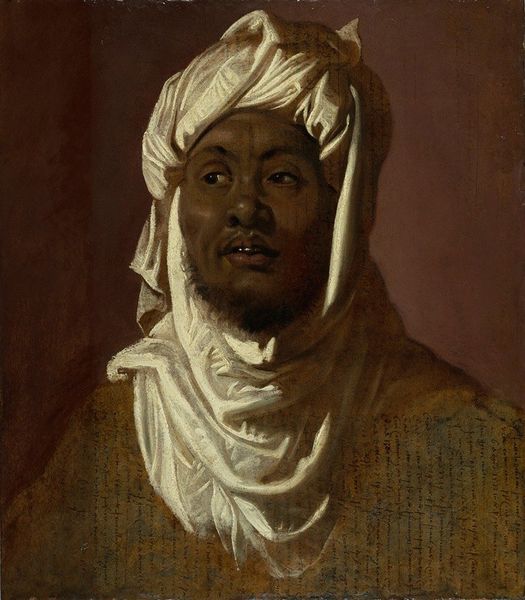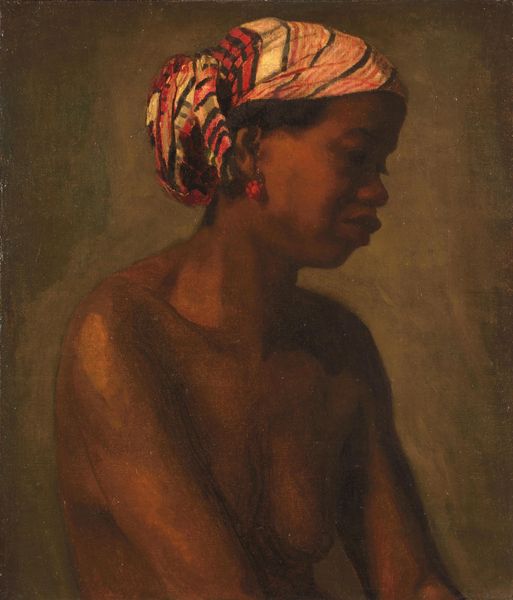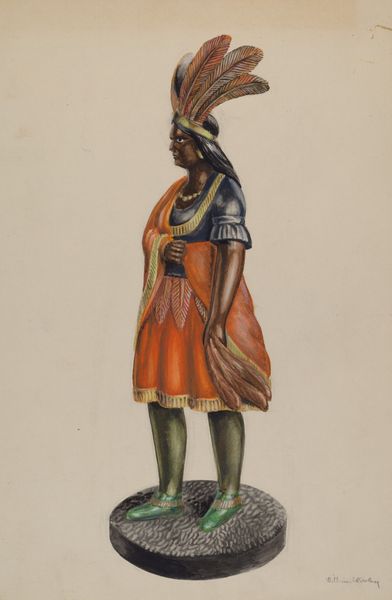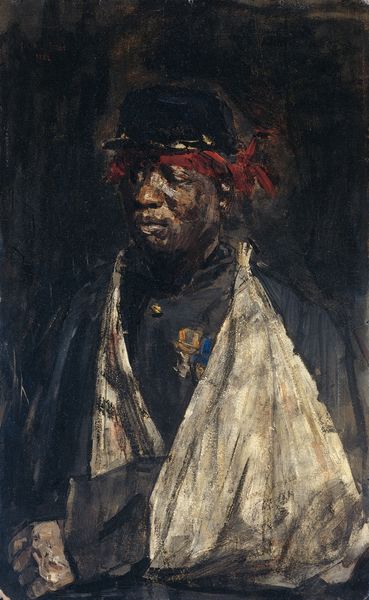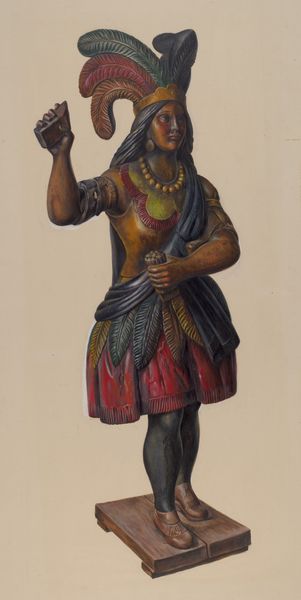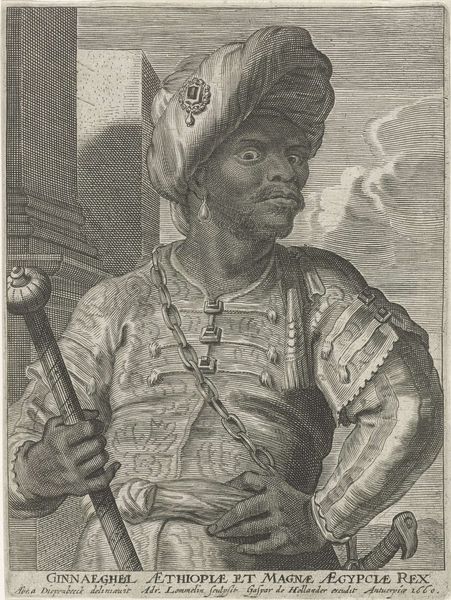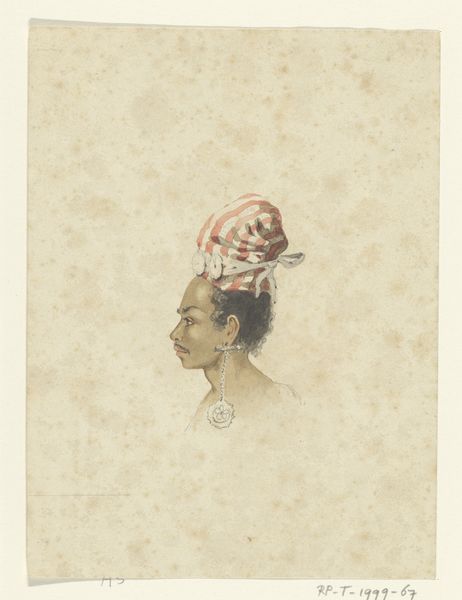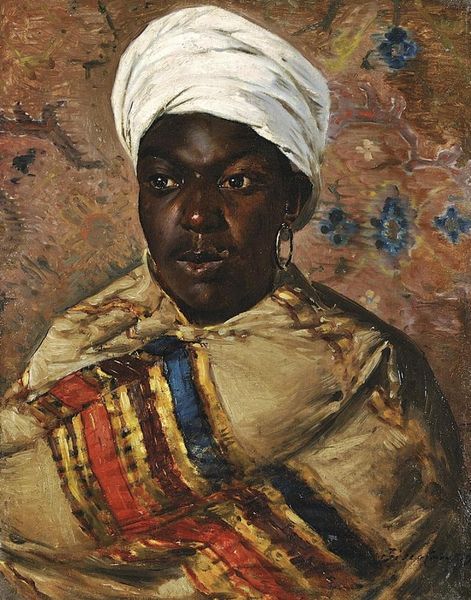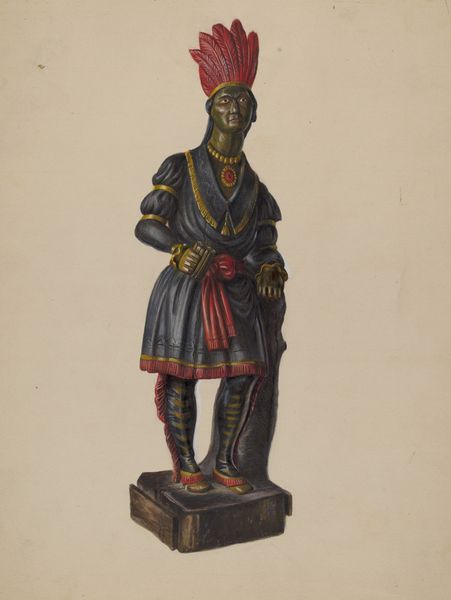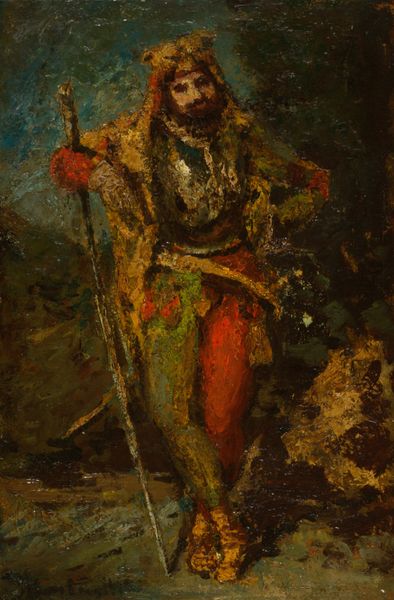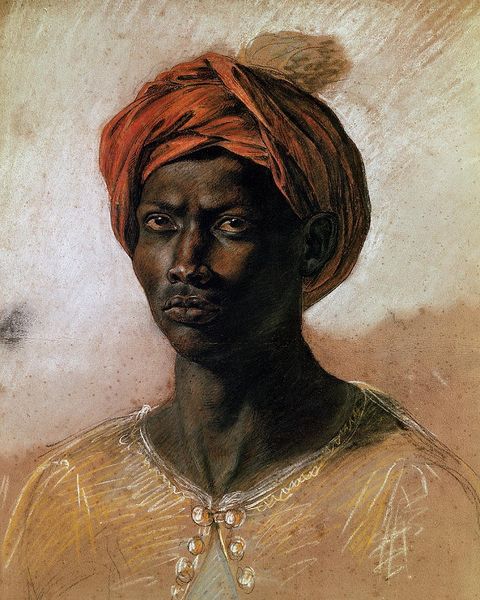
oil-paint
#
portrait
#
baroque
#
oil-paint
#
mannerism
#
figuration
#
oil painting
#
history-painting
Dimensions: 137 cm (height) x 108 cm (width) (Netto)
Karel van Mander III painted this portrait of a man wearing a turban and armour, its date is unknown. The turban, a headdress historically associated with the East, takes center stage. Turbans transcend mere fashion, symbolizing identity, status, and religious affiliation across cultures. Here, its presence speaks to the exoticism and allure of the Orient, a recurring fascination in Western art. Consider how the turban appears in Venetian paintings, often adorning figures of the Magi, or in later Orientalist works, each time imbued with varying degrees of reverence or romanticism. The headdress transforms, carrying echoes of cultural exchange and evolving perceptions of the 'other'. It's reappearance mirrors our own evolving cultural landscape. The emotional depth and psychological complexity are palpable as the sitter, whose gaze meets ours, challenges us to reconsider these established perceptions.
Comments
statensmuseumforkunst almost 2 years ago
⋮
With his hand at his side and an attitude that accentuates the impression of arrogant superiority, this African gentleman is portrayed face on. He looks past us with his head held at a slight angle, accentuating the large pearl earrings and their vertical heft. Studded with gems and feathers, the white turban lights up the darkness, catching our eye. He wears armour and golden insignia reaffirming his status. An exotic dagger is held in place by a silk sash, while a rapier can be glimpsed at his side. The painting is an example of Karel van Mander III’s Rembrandt-like studies of distinctive characters, a so-called tronie. The model, the turban and other exotic props also appear in other paintings by van Mander, including a series of paintings of motifs from the romantic novel Aithiopika by the ancient Greek writer Heliodorus.
Join the conversation
Join millions of artists and users on Artera today and experience the ultimate creative platform.
